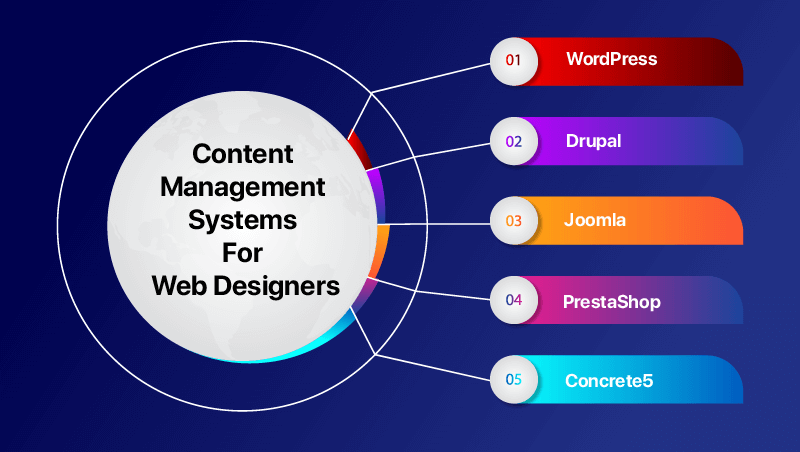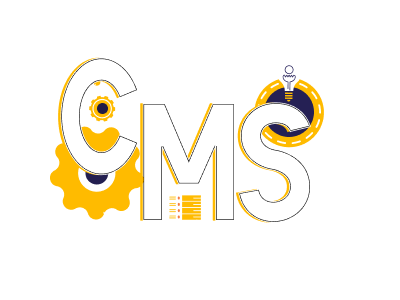There are many options when it comes to selecting a content management system for a web designing project. On the basis of the factors like features of the CMS, language it is built in and who will be working on it, picking the right CMS can be a difficult task at times.
However, for web designers, there are some content management systems that have an edge over the others in terms of features offered and utility. Some content management systems are easy to install, user friendly and work in level with the thoughtful planning of web designers.
What Is CMS in Web Design?
In web design, a CMS stands for Content Management System. It’s essentially a software platform that lets you:
- Website publishing: Create, edit, and publish content on your website, without needing to know how to code.
- Organize and manage your content: Think of it like a digital filing system for your website’s pages, blog posts, images, and other media.
- Collaborate with others: Multiple users can work on the website simultaneously, making it great for teams.
- Maintain website functionality: Update menus, forms, and other interactive elements with ease.
Best CMS For Web Designers Are Mentioned Below:

WordPress
As we all know that WordPress is the most commonly used and the most user-friendly content management systems and it is a delight for the web designers as well. WordPress is also considered as one of the best CMS in web design because of its no coding feature. WordPress can be installed within no time and one can start working with it right away. The new versions of WordPress, plugins and extensions can be easily auto-updated through the backend itself.
For the web designers who are not familiar with HTML or any other markup language, a WYSIWYG editor is provided for modifying the website design. WordPress for web designers is highly preferred because of its backend layout and streamlined and intuitive features. All the web designers find the theme language of WordPress extremely easy and plugin API is also easy to operate.
Drupal
Drupal is another most efficient CMS that is backed by a large and active community. Drupal is a wider CMS platform that extends beyond blogging. Drupal installation comes with a wide range of modules that comprises of various interesting features like blogs, forums, OpenID, user profiles and much more. One can set up a great website with various social features through Drupal.
Web designers can create interesting site clones with minimum effort through the Drupal platform. Taxonomy module is one of the best features offered by Drupal that enables the designers to add multiple category levels for featuring various types of content.
Joomla
Joomla is a great CMS for web design when it comes to functionality. It is extremely easy to get started with the Joomla installer. Unlike the other content management systems, Joomla works perfectly with the basic shared hosting package. It is straightforward and configurable.
Web designers and developers can create the perfect portfolio website through Joomla. Users get the best CMS design examples with administrative interface, intuitive drop-down menus and many other impressive features.
Joomla hosts more than 3200 extensions and there is also an active developer community behind Joomla that keeps making it better with time. Joomla also provides support for access control panels like OpenID, LDAP and Gmail.
PrestaShop
Small and medium-sized enterprises use this eCommerce CMS. In this, users get an online store management feature with comprehensive features of themes and plugins. It is written in PHP and JavaScript languages and has its presence for more than 15 years in the industry.
There is an active community using this CMS and for 2025, we recommend you to use this CMS. And if required hosting for it, don’t hesitate to choose PrestaShop hosting.
Concrete5
If you have a minimum knowledge about CMS technicalities, then Concrete5 is the right platform to use. There are simple drag and drop content blocks to customize websites, a secure user management, and a flexible style editor in it to enhance Concrete5-based website’s appearance.
Moreover, there is an in-built SEO tool that helps in website’s optimization and getting good ranks in search engines. This CMS is also written in JavaScript and PHP and it is an open source platform for users.
All the content management systems mentioned in this article are great, web designers must make a decision on the basis of the level of expertise and features required.







